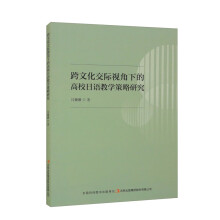Chapter 1 Resultative Constructions in English, Japanese and Chinese
1.1 Defining Resultatives and Resultative Constructions
1.1.1 English Resultative Constructions
1.1.2 Japanese Resultative Constructions
1.1.3 Chinese Resultative Constructions
1.2 Two Sharp Differences between Chinese Resultative Constructions
1.2.1 The Similarities between Chinese Two Types of Resultative Constructions
1.2.2 The First Sharp Difference between Chinese Resultative Constructions
1.2.3 The Possible Grammatical Weak V-DE-(NP)-A Construction in Chinese
1.2.4 The Second Sharp Difference between Chinese Resultative Constructions
1.3 Organization of the Book
Chapter 2 Chomsky's General Framework and Works on Resultative Constructions
2.1 Chomsky's General Framework in Syntax
2.1.1 Phrasal Structures
2.1.2 Theta Roles and the Deep Structures
2.1.3 Move
2.1.4 A Case Study in English
2.2 Foll's Three-layer System and Lin's Proposal
2.3 More on DE in V-DE-(NP)-A Construction: Previous Analyses
2.3.1 V-DE as a Phonological Word
2.3.2 DE as a Preposition
2.3.3 DE as a Derived Suffix
2.3.4 Zhu's Proposal of DE as a Semantic Element [BECOME]
2.4 Stage-level Predicates and Individual-level Predicates
2.4.1 Kratzer's Distinguishment of SLPs with ILPs by Event Argument
2.4.2 Zhang's Division of Chinese Adjectives
2.5 Li's Argument Structure Analysis
2.6 Li and Thompson's Analysis
2.6.1 Serial Verb Constructions
2.6.2 The Syntactic Structures of Subject-oriented V-V-(NP) Compounds
2.7 Sybesma's Small Clause Analysis
2.7.1 Sybesma's Small Clause Analysis on Resultative V-V-(NP) Compounds
2.7.2 Sybesma's Small Clause Analysis on V-DE-(NP)-V Constructions
2.8 Liang's Analysis of Subject-oriented Resultative V-V-(NP) Compounds
Chapter 3 V-DE-(NP)-A Constructions in Chinese as Strong Resultatives
3.1 Strong and Weak Resultatives in Chinese Resultative Constructions
3.2 V-DE-(NP)-A Construction in Chinese as Strong Resultatives
3.2.1 The Syntactic Structures of Weak Resultatives in Chinese
3.2.2 The Syntactic Structures of Strong Resultatives in Chinese
Chapter 4 The Possibility of Grammatical Weak V-DE-(NP)-A Constructions
4.1 The Possibility of Grammatical Weak V-DE-(NP)-A: On the Occasion of ILP
4.2 The Possibility of Grammatical Weak V-DE-(NP )-A: On the Occasion of Degree Words
Chapter 5 The Subject-oriented and Object-oriented Interpretations in Chinese
5.1 The Subject-oriented and Object-oriented Interpretations in V-V-(NP) Compounds
5.2 The Object-oriented Interpretation in Chinese V-DE-(NP )-V Constructions
5.3 The Syntactic Structures of Subject-oriented and Object-oriented Interpretations
5.3.1 The Syntactic Structure of the Subject-oriented Resultative V-V-(NP) Compounds
5.3.2 The Syntactic Structures of the Object-oriented V-DE-(NP)-V Constructions
5.3.3 The Syntactic Structures of the Object-oriented Resultative V-V-(NP) Compounds
5.4 The Subject-oriented Interpretation in Japanese Resultative V-V compounds
Chapter 6 Conclusion
Bibiography
Acknowledgements
展开










